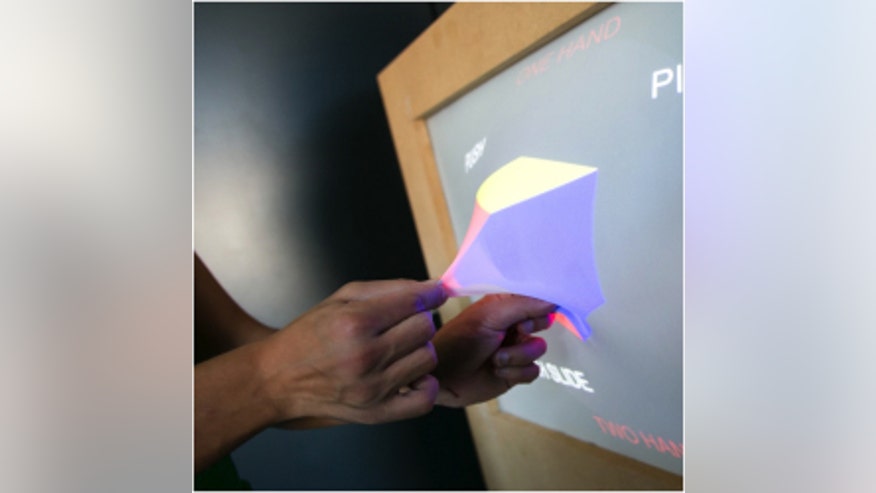
(GHOST)
The ambitious GHOST (Generic, Highly-Organic Shape-Changing Interfaces) research project is building technology that will let consumers use their fingertips to literally drag data out of touchscreen displays, bringing it into the 3D world.
GHOST is the brainchild of four universities in the U.K., Holland and Denmark. Launched in 2013, the E.U.-supported project and could have a massive impact on future gadgets.
The project imagines a future where we can use our fingertips to pull objects or data out of the hard screen and then manipulate it while it is suspended in the air.
And here’s the kicker — your fingertips will feel the data like a physical object when you manipulate the “ghost” objects in the air.
The team has already achieved a number of breakthroughs. Researchers have worked on screens that can automatically change shape, a way to take things out of a screen into the air and creating the so-called “ghosts” that you can touch and feel.
How do you get the data out of the screen?
According to the researchers, GHOST is made possible by advances in deformable screens and ultrasound levitation technology. Once pulled out of the digital 2D world, 3D objects that can be manipulated.
“It’s not only about deforming the shape of the screen, but also the digital object you want to manipulate, maybe even in mid-air,” explained GHOST Coordinator and University of Copenhagen Professor Kasper Hornbæk, in a statement. “Through ultrasound levitation technology, for example, we can project the display out of the flat screen. And thanks to deformable screens we can plunge our fingers into it.”
How can you feel a GHOST?
Users will be able to handle objects and data in an entirely new fashion. A brain surgeon, for example, could use GHOST to create a virtual version of the brain that he or she could touch and work with prior to surgery, according to the researchers.
GHOST researchers are also working with sponges and pads as deformable interfaces that a musician could flex in order to direct speed, timbre and more.
Although still in its relative infancy, the GHOST research has already yielded a number of intriguing prototypes.
The ‘Emerge’ prototype, for example, lets users pull bar chart data out of a screen using their fingertips. Once pulled out of the screen, the data can be manipulated by hand into different patterns. It can also be broken down individually, by row and by column.
‘Morphees’ is another prototype, which uses flexible mobile devices made with Lycra or alloy displays. These can bend, stretch and change shape automatically. If a user needs to enter credit card details or a social security number while in a public area, the screen could automatically bend to shield your fingers so that others cannot see your private data entry.
The potential consumer uses of GHOST technology are vast. If a user, for example, wants to watch a movie on a bigger screen, the device can ‘grow itself’ to a larger size and then shrink back when the movie is over.
“Displays which change shape as you are using them are probably only five years off now,” noted Professor Hornbæk, in the statement. “If you want your smartphone to project the landscape of a terrain 20 or 30 cm [8 to 12 inches] out of the display, that’s a little further off — but we’re working on it!”
Ballet dancer turned defense specialist Allison Barrie has traveled around the world covering the military, terrorism, weapons advancements and life on the front line. You can reach her at wargames@foxnews.com or follow her on Twitter @Allison_Barrie.

